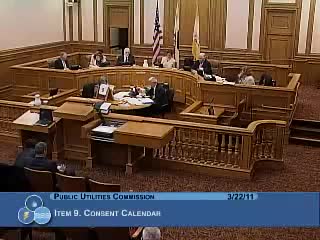San Francisco PUC proposes new pedestrian lighting policy for city streets
March 22, 2011 | San Francisco City, San Francisco County, California
This article was created by AI summarizing key points discussed. AI makes mistakes, so for full details and context, please refer to the video of the full meeting. Please report any errors so we can fix them. Report an error »

In a pivotal meeting held at San Francisco City Hall, city officials gathered to discuss the approval of a new pedestrian lighting policy aimed at enhancing safety and aesthetics in urban areas. The proposal, presented by Barbara Hale, assistant general manager for power at the San Francisco Public Utilities Commission (PUC), seeks to clarify the city's responsibilities regarding pedestrian lighting, a topic that has historically been mired in ambiguity.
Currently, the city operates and maintains approximately 75,000 street lights, with the PUC owning around 25,000 of those. The proposed policy aims to streamline the process of installing and maintaining pedestrian lights, which are designed to illuminate sidewalks rather than roadways. These lights, often lower in height and directed towards pedestrians, are becoming increasingly important as the city focuses on improving its streetscape under the Better Streets Plan adopted in 2010.
Hale emphasized the need for a clear framework, stating that the PUC would take responsibility for pedestrian lights only if they meet specific criteria, including being pole-mounted and installed according to city standards. This would ensure that the lights are not only functional but also aesthetically pleasing and safe for pedestrians.
The financial implications of this policy were also a significant point of discussion. Hale presented a hypothetical scenario where the installation of pedestrian lighting along a major street could cost upwards of $19 million. This figure includes both the purchase and installation of lights, as well as necessary infrastructure like conduits and pull boxes. Historically, the city has installed about 37 pedestrian lights annually, which translates to a capital cost of approximately $550,000 each year.
Concerns were raised about the ongoing operational and maintenance costs associated with these lights, particularly as the city transitions to more energy-efficient LED options. The maintenance cost for standard lights is significantly higher than for LEDs, prompting questions about the long-term sustainability of the proposed policy.
As the meeting progressed, it became clear that the decision to adopt this policy could have far-reaching implications for the city’s infrastructure and budget. Without a clear plan, many existing pedestrian lights remain in limbo, awaiting a responsible agency to take charge. The PUC is being urged to step up as the designated authority for these lights, ensuring that future developments align with the city’s vision for safer, more pedestrian-friendly streets.
The discussion concluded with a sense of urgency, as city officials recognized the need to act decisively to avoid leaving pedestrian lighting responsibilities unresolved. As San Francisco continues to evolve, the implementation of this policy could play a crucial role in shaping the urban landscape, enhancing both safety and the overall experience for residents and visitors alike.
Currently, the city operates and maintains approximately 75,000 street lights, with the PUC owning around 25,000 of those. The proposed policy aims to streamline the process of installing and maintaining pedestrian lights, which are designed to illuminate sidewalks rather than roadways. These lights, often lower in height and directed towards pedestrians, are becoming increasingly important as the city focuses on improving its streetscape under the Better Streets Plan adopted in 2010.
Hale emphasized the need for a clear framework, stating that the PUC would take responsibility for pedestrian lights only if they meet specific criteria, including being pole-mounted and installed according to city standards. This would ensure that the lights are not only functional but also aesthetically pleasing and safe for pedestrians.
The financial implications of this policy were also a significant point of discussion. Hale presented a hypothetical scenario where the installation of pedestrian lighting along a major street could cost upwards of $19 million. This figure includes both the purchase and installation of lights, as well as necessary infrastructure like conduits and pull boxes. Historically, the city has installed about 37 pedestrian lights annually, which translates to a capital cost of approximately $550,000 each year.
Concerns were raised about the ongoing operational and maintenance costs associated with these lights, particularly as the city transitions to more energy-efficient LED options. The maintenance cost for standard lights is significantly higher than for LEDs, prompting questions about the long-term sustainability of the proposed policy.
As the meeting progressed, it became clear that the decision to adopt this policy could have far-reaching implications for the city’s infrastructure and budget. Without a clear plan, many existing pedestrian lights remain in limbo, awaiting a responsible agency to take charge. The PUC is being urged to step up as the designated authority for these lights, ensuring that future developments align with the city’s vision for safer, more pedestrian-friendly streets.
The discussion concluded with a sense of urgency, as city officials recognized the need to act decisively to avoid leaving pedestrian lighting responsibilities unresolved. As San Francisco continues to evolve, the implementation of this policy could play a crucial role in shaping the urban landscape, enhancing both safety and the overall experience for residents and visitors alike.
View full meeting
This article is based on a recent meeting—watch the full video and explore the complete transcript for deeper insights into the discussion.
View full meeting
